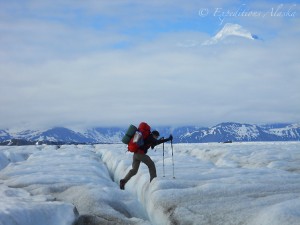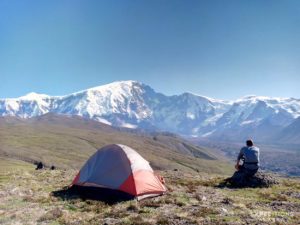
Hey Folks,
What better way to celebrate the new year than a quick tip of the hat to Expeditions Alaska’s trip of the year for 2012? The winner, for me, was the Malaspina Glacier traverse we did in August. 12 awesome days on the southern coastal edge of Wrangell-St. Elias National Park and Preserve, I led a group of 5 hardy adventurers over the largest piedmont glacier* in North America, down to the beach, and along the coast to our pickup place.
A sketchy start, as our backcountry bush pilot informed us, right before we departed, that we wouldn’t be able to fly to our intended destination in the Samovar Hills. The huge snowfall we’d had over the previous winter hadn’t yet melted out enough to land safely at the remote backcountry strip.Plan B comes up. We flew instead, west of the Samovar Hills, to Icy Bay, and began our hike from there. Nothing like a little last minute change of plans to add to an adventure!
Starting out west of the glacier, on the shores of Icy Bay, we ventured east, up on to the core of the massive Malaspina Glacier. We had to use packrafts to cross a couple of rivers, which made the world of difference to our mobility. Look for some more packraft trips to be added in the future, awesome little boats.
In all, we spent 5 nights on the ice, walking over moraine and ice, avoiding crevasses, staring into the deep abyss of huge moulins (holes in the ice) and wondering how a glacier could seem to go, infinitely, uphill. 🙂 It’s true, the glacier actually DOES go uphill. The glacial ice is so deep on the Malaspina Glacier, that the floor of it sits well beneath sea level; a thousand feet beneath sea level, to be exact. What we’re hiking over is actually, in a sense, a huge frozen lagoon (huge = greater than 15 00 square miles). While on top of the ice we were travelling, mostly, at about a thousand feet or so above sea level. And the bottom of the ice, beneath us rests well below sea level. So as the basin of that ‘lagoon’ rises to meet the sea, the ice surface we’re hiking over steadily climbs. It’s a weird, weird perception.
Coming off the ice, we had to make our way down to the beach. The hardest part of the trip, scrambling over some rough and gnarly moraine, bushwacking a bit, and paddling to the coast. Without the packrafts, this stretch of the trip would’ve been rated “strenuous”, for sure. As it was, we got to the beach ok, then had to walk a mile or so along the beach of the Lost Coast to find a campsite with water.
That night we sat on the beach by our campfire – dressed in light t-shirts or similar, wondering at how quickly the temperature had changed; only that morning we’d eaten breakfast on top of the ice, dressed in layers upon layers, wool, fleece, polypro and down layers bundled beneath windproof outer shells. Hats, gloves and thick socks were the order of the morning. The next day, just a few short miles away, hiking along the beach, Sergei was wearing shorts! Amazing how dynamic things are here in Alaska.
We had a great walk along the beach, 2 more nights camped by a fire, waves pounding on the shore next to camp; we saw a small group of Sea lions, which gave us a nice morning of photography, and we had a fun walk through the beautiful old growth forest of massive Sitka Spruce trees. From sandy beaches, to lush temperate rainforest to alpine glaciers, this was an incredible hike.
The diversity of terrain, the adventure of an exploratory trip (I’d only hiked part of the route previously) and a fantastic group of folks all returning for their 2nd, 3rd and 10th trip) made this one a particularly memorable trip. Great hiking and camping, great travel, great folks, great landscapes and great fun. You can see a short video and other pictures from the trip on the Malaspina Glacier Trip Page.
Thanks Sergei, Jodee, Mike, Geoff and Larry for a great trip.
Cheers
Carl
* – ok, so the scoop is that, officially, the Malaspina Glacier is recorded as the largest piedmont glacier on the continent, but, in actuality, the glacier does reach the coast. A piedmont glacier is one who’s terminus is on land, which describes the bulk of the Malaspina Glacier – but right by the Sitkagi Bluffs, at a place we call “Sitkagi Lagoon” the Malaspina Glacier calves into the tidewater lagoon. It’s definitely a tidewater glacier! Climate change is happening, and quickly, round these parts.



